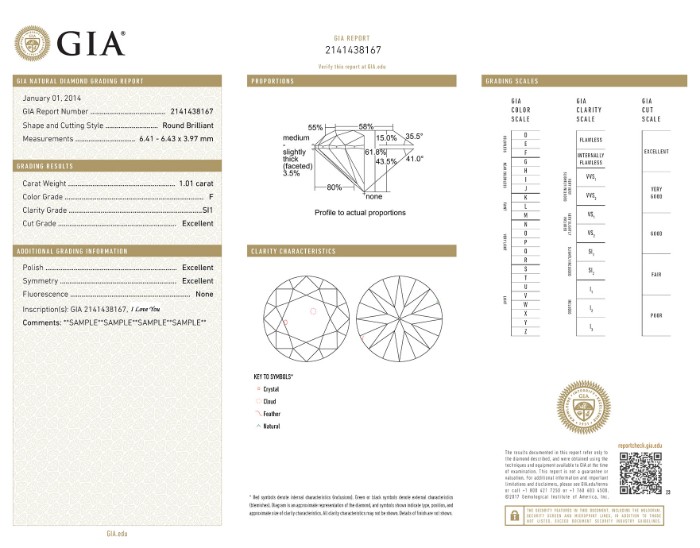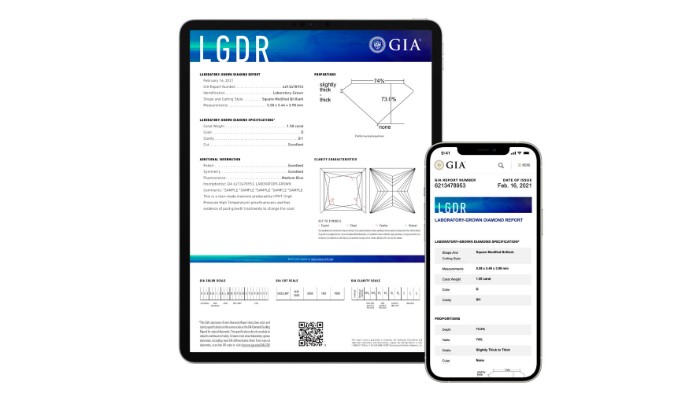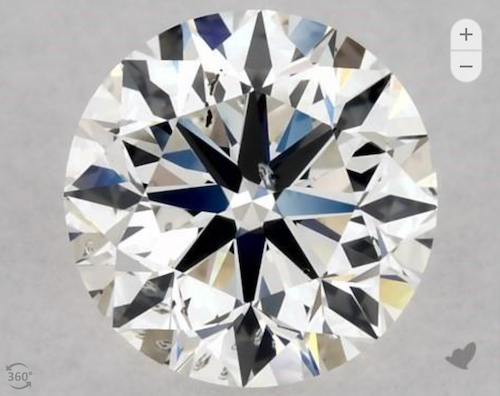This article has mentions of products from one or more companies, and I may receive compensation if you purchase those products following reading my recommendations.
Diamonds are treasured by people around the world for their interesting and beautiful characteristics. But, before we can truly appreciate a gem’s beauty, it must be properly identified, evaluated and graded. To ensure that your investment in a fine jewelry piece is worthwhile, learning about certifications like GIA certification is essential. In this article, we will explore what exactly GIA certification is and why it matters when purchasing diamonds or other precious stone jewelry pieces.
This piece will cover:
- Who are the GIA
- What are GIA Certified Diamond
- How Do the GIA Grade Diamonds
- GIA Lab Grown Diamonds
- Where can I buy GIA Diamonds
- GIA vs AGS?
- Final Thoughts
Who are the GIA?
The Gemological Institute of America (GIA) is an independent, nonprofit organization that has been providing gemology education and research since 1931. They are the world’s leading authority on diamond grading and gem identification, and their expertise is highly respected within the industry. To become certified as a GIA diamond grader, one must go through extensive courses and training. Once certified, these diamond graders are tasked with accurately grading diamonds according to the GIA’s methodology to provide an impartial report on any given stone.

What are GIA Certified Diamonds?
GIA Certified diamonds are rare gems that have been evaluated using the Gemological Institute of America’s (GIA) methodology and quality standards in a GIA laboratory. GIA-certified diamonds are graded on a range of criteria including cut, clarity, color, carat weight and other characteristics. The grading process is rigorous and leaves no room for variation in opinion or uncertainty when determining the exact nature of a diamond. GIA-certified diamonds have become highly sought after due to their accuracy and reliability as an investment piece.
How Do The GIA Grade Diamonds?
To ensure that every GIA Certified diamond meets the same high standards, each stone must go through meticulous rounds of inspection before it can receive its certification. The first step is to examine the diamond’s external features such as shape, size, and setting style. Once the outer inspection is complete, the diamond is then weighed and its carat weight is determined. After that, it will be inspected for clarity – a process which requires examination under 10X magnification. Finally, GIA graders analyze the stone’s color, cut quality and fluorescence.
Here is an example of a GIA certificate:

Learn how to read a diamond grading report here.
GIA Lab Grown Diamonds
In recent years, lab-grown diamonds have become increasingly popular due to their affordability. The GIA has also established an independent grading system for these man-made stones to properly identify them from natural diamonds. These graded stones can easily be distinguished by the unique “Laser Inscription” on their girdles which reads “LG (Gem Type)”. Lab-grown diamonds can be graded for clarity, color and carat weight just like natural diamonds.
To distinguish natural from laboratory-grown diamonds, GIA laboratories begin by submitting the diamond to an examination. If it passes this initial inspection, GIA graders then evaluate the stone using their globally recognized 4Cs system of assessment. This established protocol ensures accurate grading and promotes consistent quality control across all markets worldwide.
Their graders assess each lab-created diamond with the same precision as natural diamonds. With the GIA Laboratory-Grown Diamond Report, consumers can now make informed decisions with higher clarity than before, thanks to its detailed color and clarity specifications. The report additionally includes a plotting of the stone’s clearness attributes for an even more precise evaluation.
Here is an example of Lab diamond GIA report:

Where Can I Buy GIA Diamonds?
GIA Certified diamonds can be found at a variety of places such as jewelry stores, online retailers or auction houses. However, it is important to note that not all diamonds sold in these establishments are necessarily GIA certified. To make sure that the diamond you purchase is authentic, always ask to see the certificate that details its grading report.
Here's an example of a 1.04 ct I VS1 GIA Round Cut Loose Diamond from Whiteflash:
Here is another option from James Allen:
GIA vs AGS?
The American Gem Society (AGS) is a trade association for professional jewelers and diamond dealers that specializes in diamond evaluation and appraisals. Their core focus is cut quality, while the GIA focuses more on the clarity, color, and carat of the diamonds.
More recently however the GIA and AGSL have merged into one organisation. Clients can anticipate incomparable accuracy and dependability regarding diamond grading. This new agreement reinforces GIA's rigorous standards, thus generating additional trust in the eyes of consumers when buying a diamond.
Moving forward you will be able to get an AGS Ideal Addendum Report with your diamonds.

To align with GIA's goal of eliminating paper reports by 2025, the AGS Ideal report will now be exclusively digital. Starting this year, the GIA dossier will also be available only in digital format. Additionally, the AGS Ideal addendum report can be accessed through the GIA report check page and will be linked to the corresponding GIA report number without having its own separate report number.
Final Thoughts
GIA Certified diamonds are some of the most sought-after gems in the jewelry industry due to their accuracy and reliability as an investment piece. They must go through rigorous rounds of inspection before they can be certified and are graded according to the GIA’s methodology in order to provide an impartial report on any given stone. While GIA is most widely-recognized authority on diamond grading, AGS is also a respected grading authority and it would be wise to understand the nuances between them before making your purchase.


